This is the opening program for the series of traditional activities and rituals taking place at the Thang Long Citadel on the occasion of Ky Hoi Lunar New Year, with the desire to preserve and uphold fine traditional cultural values, thereby bringing visitors amazing experiences about Vietnamese customs and culture in the spring. In particular, the ceremony also welcomed over 100 typical expatriates who live far from their homeland, but their minds are always towards their fatherland and the spring in Vietnam.
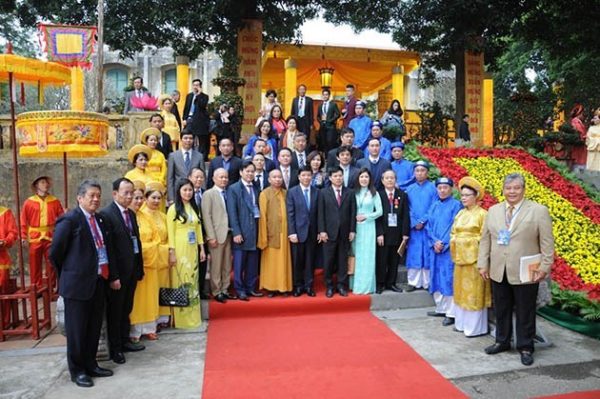
The expatriates in the incense offering ceremony at Dragon Perron- Kinh Thien Palace
In Vietnamese mind, Lunar New Year is a sacred holiday welcoming the new spring and commemorating the ancestors. Kitchen God Day on Lunar January 23rd is a long-standing custom of Vietnamese people, the first custom in the traditional New Year, seeing off the old year, welcoming the New Year with hopes of prosperity and peace and happiness.
In the ancient Thang Long palace, Tet ceremonies were performed solemnly and strictly, expressing the meaning of “Farewell the old, welcome the new”, seeing off the old year to welcome the new year, including a series of ceremonies such as calendar distributing ceremony (Lunar December 24th), Spring buffalo tributing ceremony (in lichun before Tet), Feast of awakening (cleaning seal, sealing), Festivals (Neu Tree Erecting)
Calendar Distribution Ceremony (Tien lich) is an important ritual of the court because for generations, the calendar stays important in the conception and daily life of the Oriental People. For dynasties, the calendar is considered as a command of heaven for peasants to apply for crops and sacrifices. The king is son of heaven, on behalf of the heaven, governing the country to receive the calendar from the Supreme Being and give it to the citizens. Calendar making is calculated by Imperial Observatory Department, after being approved, the calculation shall be written and printed by Trung Thu Giam. At the end of Lunar December (Lunar December 24th), the ceremony (also called “Ban soc” in Nguyen Dynasty) will be carried out at Dan Tri yard. In the ceremony, the officers will wear uniform to perform the ceremony. The imperial observatory department will tribute the calendar to the Emperor, then the Emperor will give a calendar to the people.
Phat Thuc Ceremony (Phong An Ceremony) is to clean the seal, a ritual that indicates the suspension of country work to prepare for Lunar New Year, in Nguyen Dynasty, usually on Lunar December 20. On this day, in the presence of the Emperor in Can Chanh Palace, civil and military mandarins of the first- rank, second rank and above will wear mandarin uniform, along with Home Affairs officers and Privy Council member to carry out the ceremony of cleaning the seal by fragrant water, then wiping water by a red cloth. Afterwards, the seal will be put in the cabinet locked outside with sealing paper labeled with two words “Hoang Phong” (so Phat Thuc Ceremony is also called Phong An ceremony). After this ceremony, the Emperor and the mandarins stop work (no use of the seal) until the beginning of New Year, then choose a good day for re-using the seal, at that time, return to work. In Thang Long, Phong An ceremony was not clearly recorded as in Nguyen Dynasty, but this ritual was undoubtedly practiced under Le Dynasty, the most obvious evidence is that foreign traders like Samuel Baron once staying in Thang Long claimed that Vietnamese Lunar New Year began on the 25th day of the lunar calendar. In the mandarin place, at that time, the upside down seal was out in a box in one month.
Thuong Tieu Ceremony, erecting neu tree on the New Year is held around Lunar December 23-30. This is a traditional ritual during the Lunar New Year of Vietnamese people with Buddhist meaning, folk beliefs and the desire to repel bad luck and pray for good luck. Neu trees in the palace are erected by the king in various venues in front of the main palace and the shrines. The soaring neu tree is also a symbol of edging Lunar New Year. The tree of the king’s palace is erected first, then citizens erects the own trees.
Kitchen God day is on Lunar December 23. This is a long-standing traditional customs preserved till nowadays. How this ritual takes place in the place is unknown. However, it is revealed that Le Dynasty ruled in the offering ceremony of the Kitchen God Day, including “12 truncated-cone-shaped cakes, one tea tray, one pig, joss paper, foil paper, betel and areca, incense, oil ”.
In the ceremony, visitors will be able to learn and study traditional rituals in the court and folklore of the Lunar New Year. In particular, visitors also experience two important traditional rituals during the traditional New Year: Kitchen God worshipping ceremony and Thuong Tieu ceremony (Neu tree erecting)
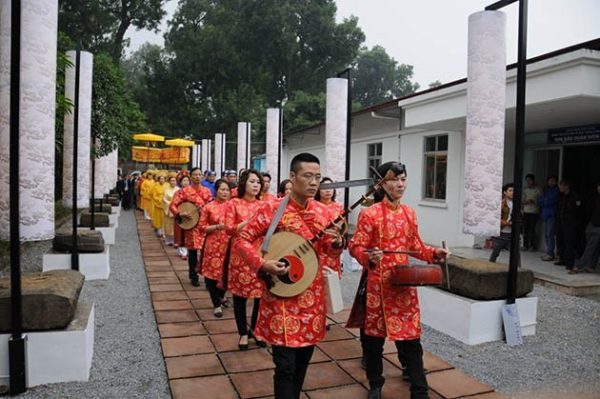
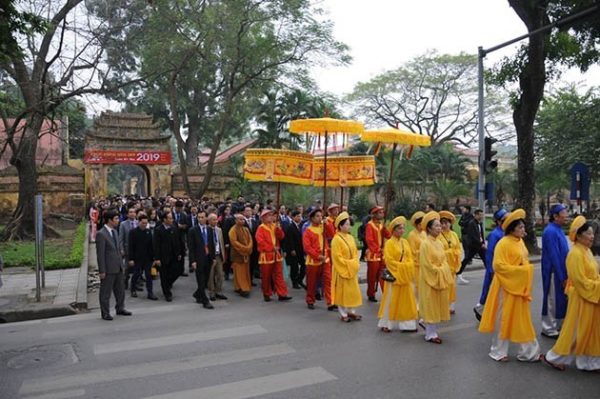
Carp procession delegation and leading eight-sound band head to archaeological relic area at 18 Hoang Dieu.
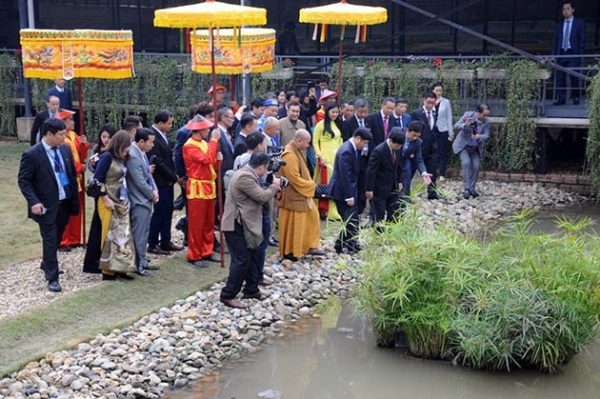
The ritual of releasing carps into an ancient river in Thang Long Citadel Imperial.
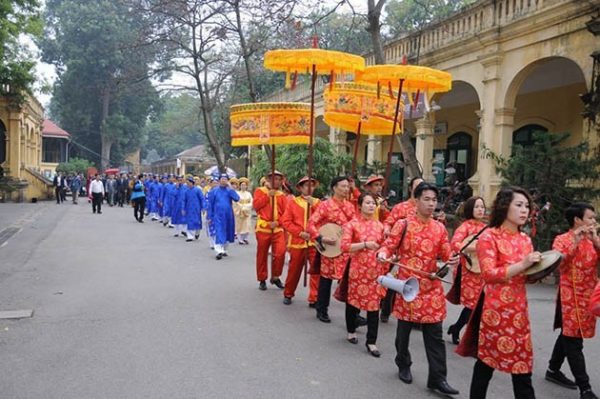
Afterwards, the procession delegation head to Doan Mon to carry out neu tree erecting ceremony

Doan Mon Yard is decorated colorfully with the symbol of Thang Long Dragon and blooming flowers
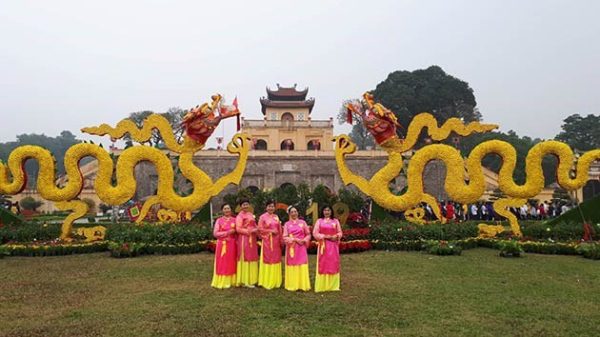
Delegates carries out the neu tree erecting ceremony
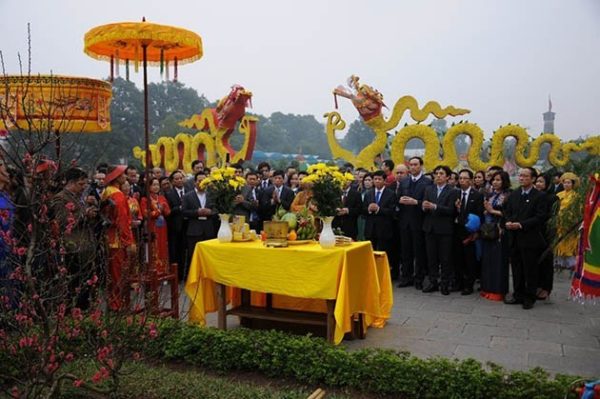
Neu tree is slowly erected in front of Doan Mon gate

Earthen bell is hung to wish for luck and peace.
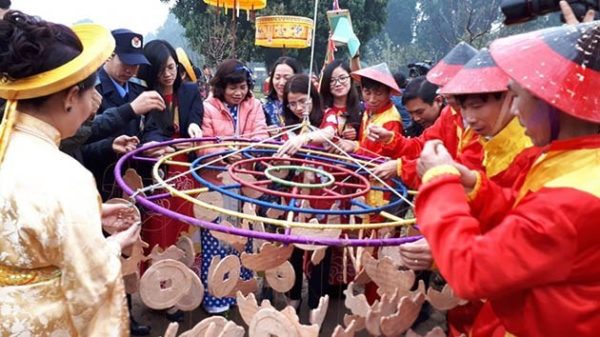
Neu tree- the symbol of edging Lunar New year is erected in the spring atmosphere in Doan Mon gate

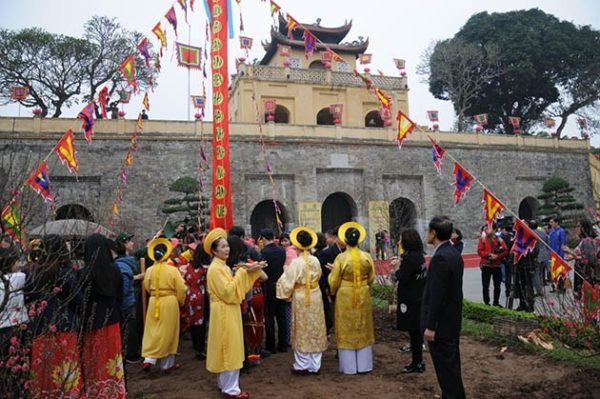
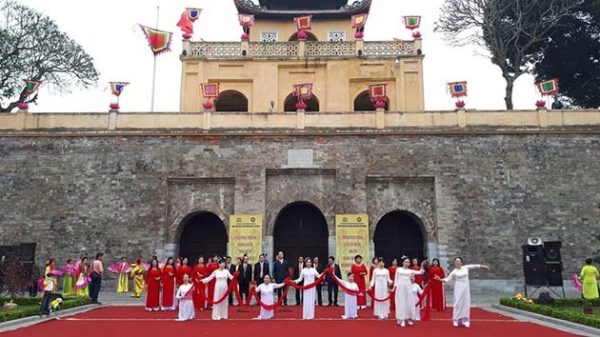
A new and happy spring is coming.
HTTL

